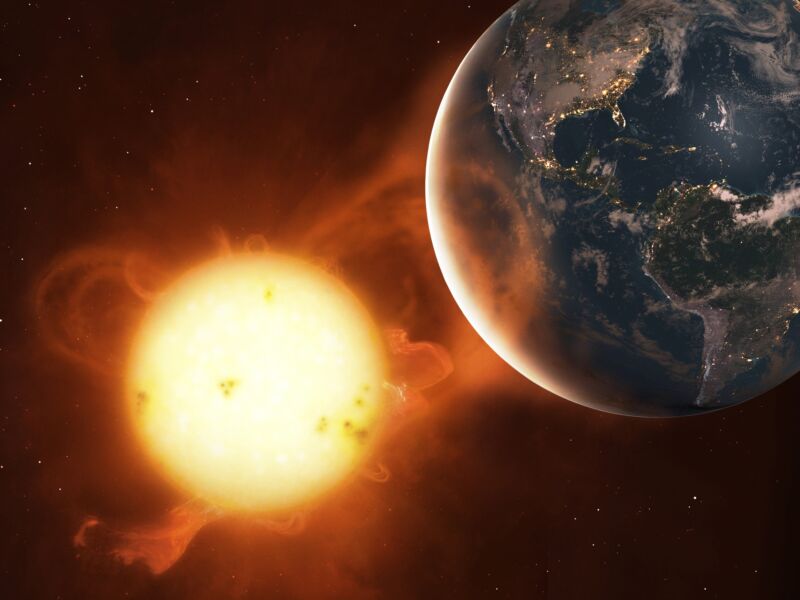
SpaceX had to ditch most of its latest batch of Starlink satellites because they were disrupted by a geomagnetic storm after being launched from the Falcon 9 rocket. Up to 40 of the 49 satellites will re-enter the atmosphere or have already done so because they were unable to reach their intended orbits.
In an update posted yesterday, SpaceX said that on February 3, the Falcon 9’s second stage deployed 49 “satellites into their intended orbit, with a perigee of approximately 210 kilometers above Earth, and each satellite achieved controlled flight.” SpaceX initially deploys satellites into lower altitudes than they ultimately orbit in “so that in the very rare case any satellite does not pass initial system checkouts, it will quickly be deorbited by atmospheric drag,” the company said. SpaceX has licenses for altitudes of 540 km to 570 km and 335 km to 346 km.
Last week’s geomagnetic storm hit a day after launch, SpaceX explained:
Unfortunately, the satellites deployed on Thursday were significantly impacted by a geomagnetic storm on Friday. These storms cause the atmosphere to warm and atmospheric density at our low deployment altitudes to increase. In fact, onboard GPS suggests the escalation speed and severity of the storm caused atmospheric drag to increase up to 50 percent higher than during previous launches. The Starlink team commanded the satellites into a safe-mode where they would fly edge-on (like a sheet of paper) to minimize drag—to effectively “take cover from the storm”—and continued to work closely with the Space Force’s 18th Space Control Squadron and LeoLabs to provide updates on the satellites based on ground radars.
Preliminary analysis shows the increased drag at the low altitudes prevented the satellites from leaving safe-mode to begin orbit-raising maneuvers, and up to 40 of the satellites will re-enter or already have re-entered the Earth’s atmosphere. The deorbiting satellites pose zero collision risk with other satellites and by design demise upon atmospheric re-entry—meaning no orbital debris is created and no satellite parts hit the ground.
SpaceX touted its systems for minimizing space debris, saying last week’s “unique situation demonstrates the great lengths [to which] the Starlink team has gone to ensure the system is on the leading edge of on-orbit debris mitigation.”
SpaceX has about 1,900 Starlink satellites in orbit. SpaceX has Federal Communications Commission permission to launch nearly 12,000 satellites and is seeking a license to launch an additional 30,000.
